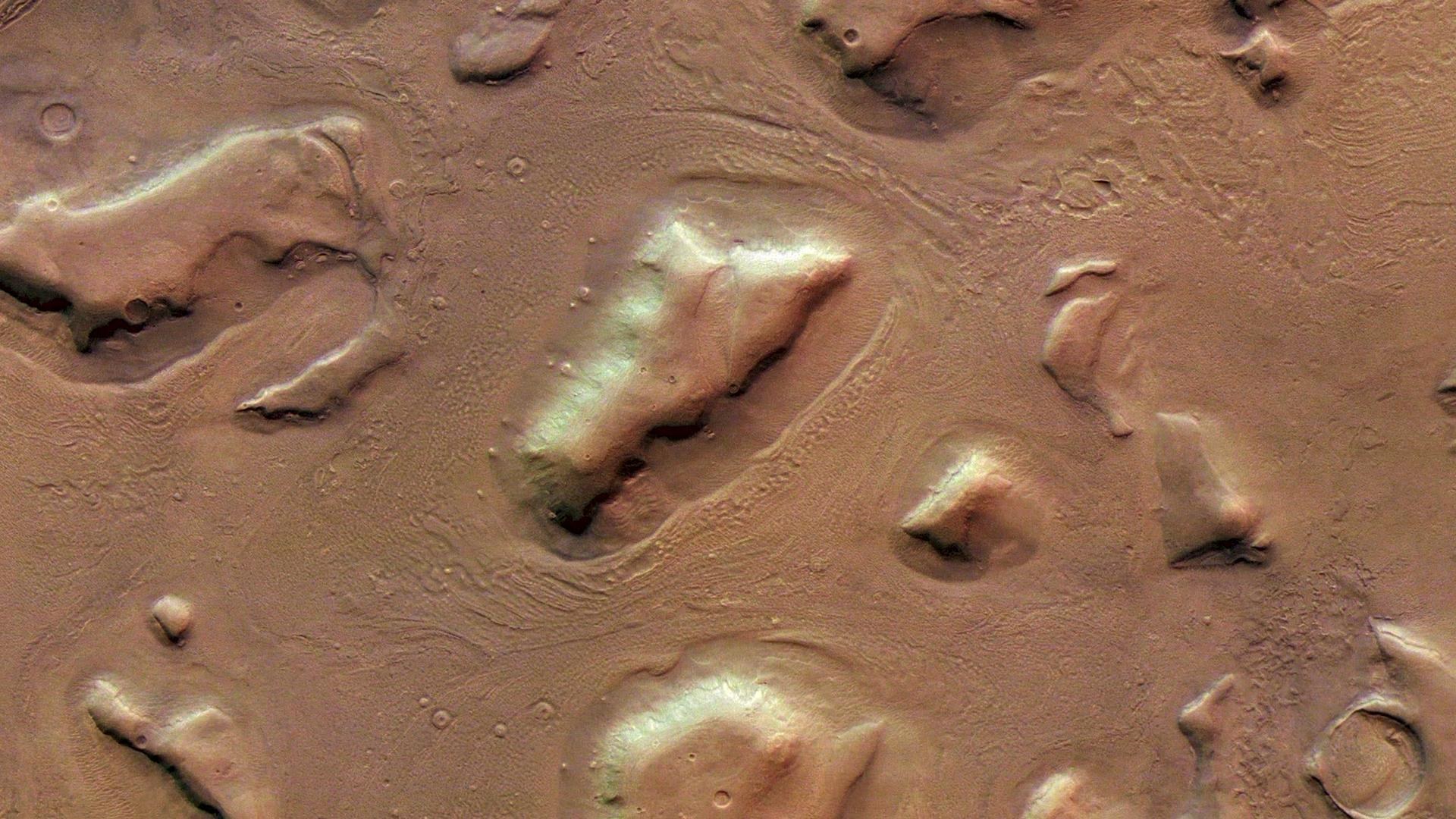Image Detail 4: Concentric deposits around the mesas
Image Detail 4: Concentric deposits around the mesas
The terrain between the mesas is covered by deposits in many places. The surface texture of these deposits indicates a slow, viscous downward movement of a mixture of debris and ice. The concentric lobate debris aprons around the plateaus resemble rock glaciers or glaciers completely covered with debris, as they occur on earth in Antarctica, for example. The surface patterns formed by the glacier as it deposited its debris and rubble reflect the different flow velocities of the underlying viscous ice. Radar observations suggest that there is still ice under this rock blanket today, even if it is not visible. If ice is covered by rocky debris, it is likely to be protected from sublimation (the transition from solid to gaseous state) for an extensive period.

